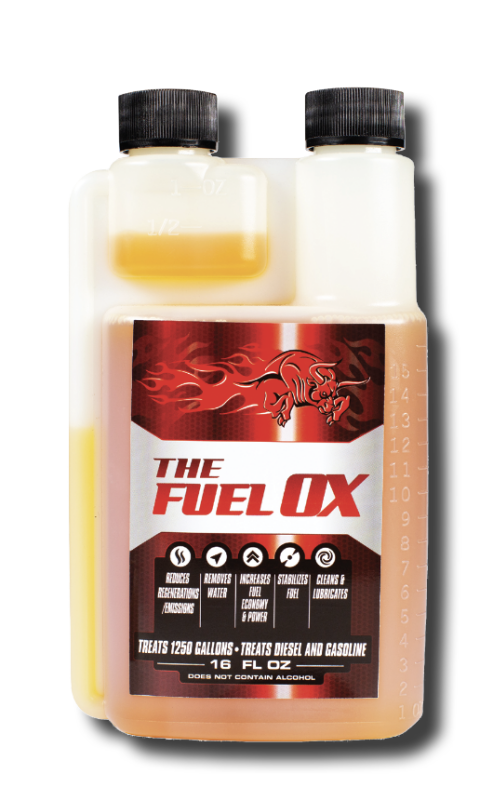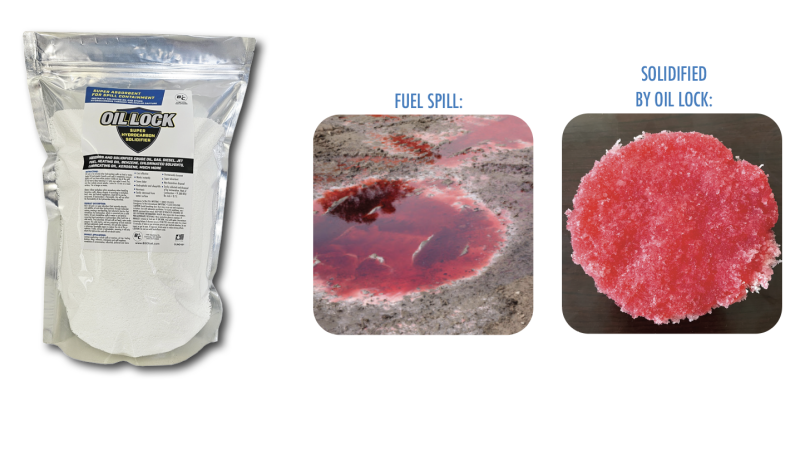It doesn’t matter what publication you are reading, what you’re listening to on the radio, or what you are watching on the computer screen; it’s hard to ignore climate change. There’s been an increasing emphasis on the need to lessen adverse climate impacts, and reducing particulate matter emissions is part of that process.
Hybrid and all-electric vessels are two ways the maritime industry tackles the climate issue by reducing fuel consumption and thereby reducing emissions. Another is treating fuel for lower particulate matter emissions with a product that’s also designed to reduce engine maintenance.

One company maritime operators have been turning to in that regard is Fuel Ox, Asbury, N.J., and its flagship product, Fuel Ox. The Fuel Ox fuel additive, with its combustion catalyst component, breaks up clumps of fuel molecules, letting the molecules interact much more thoroughly with air in the engine’s combustion chamber. This allows more of the fuel to be burned, thereby reducing the black smoke and soot that otherwise would be created. “That reduces soot by over 50 percent,” said Fuel Ox CEO Rand Taylor.
That level of soot reduction is achieved at a combustion temperature of 600°, which, Taylor said, “no one else does.” Others are more in the 900° range. The lower temperature provides a more thorough fuel burn that reduces soot, which is unburned fuel. Reducing soot also means the engine’s particulate filter that removes soot from the exhaust gas is less likely to get clogged. The same goes for the exhaust gas return that funnels exhaust back to the engine to be reburned. At the same time there’s improved fuel efficiency. “Usually, it is in the five-to-seven percent better fuel efficiency group,” said Taylor.
When you add Fuel Ox with combustion catalyst to fuel, it is generally an effortless procedure, with no precise measuring needed, said Taylor. A gallon of Fuel Ox will treat 10,000 gals. of fuel. Simply pour the amount needed into the fuel tanks. “It mixes on its own,” he said. “Mixing is not a big issue.” Most of the competition is 1 gal. to 1,000 gals. or 1 gal. to 2,000 gals., said Taylor.
Why stop there? Just add Fuel Ox’s Infinity Lube Liquid Friction Eliminator to the vessel’s engine oil to reduce engine wear. “Wear metals are what kills your oil,” said Taylor. “It’s the wear metals that mix with the oil and cook in the oil that create toxic chemicals, as well as wear down metal itself.” That toxic brew doesn’t lubricate as it should and must be replaced.
In terms of lubricants, another Fuel Ox offering, Infinity Lube Super Spray, is a popular product for external mechanical systems. It’s a 100% plant-based spray that “treats metal and case-hardens it in place” utilizing the natural friction of moving parts. The friction “creates the heat that’s used to infuse carbon and nitrogen out of plant protein directly into metal,” said Taylor. In the process, both friction and wear are reduced.
In late January, Taylor said Fuel OX will introduce an “improved and more powerful catalyst in the fuel additive” that’s been in development for three years. Fuel Ox had been limited as to how much catalyst could be mixed with the fuel additive. But after “changing the chemistry of the product slightly, the new Fuel Ox features 25 percent more fuel catalyst than the product currently available,” Taylor said. “That’s enough to improve fuel efficiency and reduce emissions even more.”

PETROLEUM SPILLS
Shifting focus from the atmospheric down to earth, there’s a new offering when it comes to cleaning up water and deck-level petroleum spills. It’s called Oil Lock, a super-hydrocarbon solidifier that was introduced at the International WorkBoat Show in New Orleans in December by B3C Fuel Solutions, Conway, S.C.
Diesel fuel and oil spills are normally dealt with, be it on deck or at the dock, by trying to contain and absorb the spill with a kitty-litter type product. B3C Fuel Solution’s alternative is Oil Lock. “It will absorb like 10 times more than kitty litter and is a lot cheaper,” said Greg Allen, B3C Fuel Solutions vice president.
When Oil Lock is spread over a spill on land or in the water, it turns diesel into a “rubberized solid chemical matrix that doesn’t leach,” he said. At the same time, it eliminates flammable vapors that cause fires. Oil Lock only absorbs hydrocarbons, not water, and will float indefinitely, absorbing up to 11 times its weight. It can be skimmed from the water’s surface and is landfill safe.
Allen said he had given samples to a vessel operator at the WorkBoat Show, who subsequently ordered bags of Oil Lock for each of his vessels and for his company’s office facilities.
A second B3C Fuel Solutions product on display at the WorkBoat Show for the first time that drew a lot of attention was Mechanic In A Bottle – Hydraulic Oil Fit & Stabilizer. “It takes emulsified hydraulic fluid that’s useless and doesn’t work right and reverses all that,” said Allen. “It cleans it right up.”
Though lube oil might look clean, it still contains water, and at some point, the oil becomes emulsified. Mechanic In A Bottle works with all oils, Allen said. “Our product breaks the emulsion bond and puts the water back to the state it was in, and the oil clears up,” he said. “It now has the proper viscosity and is useable again. No one else in the world can do this.”




